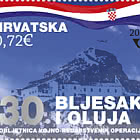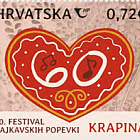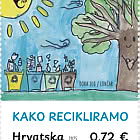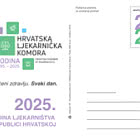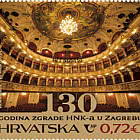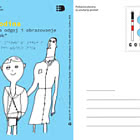Croatian Marian Shrines
Church of the Assumption of the Blessed Virgin Mary
How did this small, centrifugal Croatia survive, which perhaps, like seams, is held together only by a network of supernatural helpers, among which FIDELISSIMA MATER ADVOCATA CROATIAE SANCTISSIMA VIRGO REMETENSIS is not the most insignificant, of Remete near Zagreb (i.e. today actually in Zagreb)? At the edges of the daily hustle and bustle these helpers exist as lightning bolts of our troubles, sometimes sharing with us both screams and weeps: as quite recently, during last year's earthquake, when the ancient sanctuary, destroyed so many times, lost part of its remaining beauty, our heritage.
The Church of the Assumption of the Blessed Virgin Mary is associated with the arrival of the first monk of the Order of St. Paul the First Hermit, known as the Pauline Fathers (hermit-eremitae-Remete), Abbot Isquirinus, in Croatia. According to tradition, he founded the first monastery in 1272. In 1319, thanks to the generosity of King Charles Robert, a new monastery in Remete with a church was constructed. Along with it, however, the foundations of two other older churches have been excavated, one of which may be pre-Mongol. In 1394 the monastery burned down for the first time. It was rebuilt in 1410. Matthias Corvinus fortified it in 1485 with a tower and a wall (demolished in the 19th century). The church and the monastery were severely damaged, and the Paulines were killed by the Turks (1557 and 1591). In the 17th century, the monastery and the Remete settlement were affected by the plague. In 1786 Joseph II abolishes the monastic orders, the Paulines leave, and Remete becomes a parish. The Carmelites have been the guardians of the church since 1963.
The single-nave Gothic church grew from the 14th to the 18th century. Its sumptuous façade was designed in the first half of the 18th century. In 1745, it was painted by the Pauline monk, Ivan Ranger, with rich illusionist details, scenes from Mary's life and medallions depicting Mary's local miracles. Records of these miracles were later burned, so the painter preserved the names and events, poetically evoking characters and spaces from the Middle Ages to the Baroque with his paintings and text. Unfortunately, some of these medallions were destroyed in the 1880 earthquake. Even before Bollé's extensive regotization of the church (which was caused by oscillations of taste, and triggered by the earthquake), it changed many elements of the previous historical identity - the irresistible desire of church potentates for the new and their own remembrance reckoned with Baroque heritage.
The miraculous statue of Mary is especially revered in the Shrine of Remete. Part of the Gothic wooden altar with Mary and four small saints was built into the Baroque altar from 1706, the work of Pauline sculptors Tomo Jurjević and Pavle Bellina. The year 1490 and the author's name, "brother Pavao Poljak", are engraved on the statue.
The shrine of Remete was especially revered and regularly visited by numerous Zagreb bishops. Its silence radiated a particularly appealing power. "Who is that virgin who rises from the desert like the dawn that shines", is the Latin text on the triumphal arch of the church. What is that place in a noisy town where even a pilgrim crowd is made up of individuals and where everyone has a chance to reach out to themselves? A place that has just shared its hardships with us and to which we owe as much as to ourselves.
Shrine of Our Lady of Trsat
The shrine of Our Lady of Trsat, on a hill above Sušak and Rijeka, is known as the oldest Marian shrine in Croatia. The history of the shrine begins at dawn on 10 May 1291, when some lumberjacks spotted three unusual stone walls set without a foundation in a place where there had never been houses. That night, the sick parish priest, Aleksandar Jurjević, dreamed of the Mother of God telling him that that was her house in Nazareth, and he woke up healthy. People started coming to the place of grace, and so did the lord of the land, the Krk prince Nikola IV Frankopan, who came to inform himself of the facts. Prompted by respectful critical awareness, he sent a mission to Palestine to check the situation with the Nazarene house. It was established that the house mysteriously disappeared from there. The dimensions of the remaining foundations and the type of stone corresponded perfectly to the Trsat wall - the fourth, missing wall was a natural rock. All subsequent checks confirmed the same. Rational interpretations of this migration indicated a crusader, especially Templar, entry of relics from the Holy Land.
Three and a half years later, on 10 December 1294, the house disappeared from Trsat. It appeared across the Adriatic, in Loreto, and was transported by angels. Its transfer was the subject of much debate, but a belief in the unlimited possibilities of the supernatural prevailed. A monumental basilica was built around the house and so it was "captured" and never moved again. Thanks to this, Loreto became a famous place of pilgrimage. The same happened with Trsat that filled its absence with a vivid memory.
On the site of the house, the Frankopan princes built first a chapel and then a church (1453 - 1468). They invited the Franciscans of the Bosnian vicariate to lead it and built them a monastery. In 1644, the famous Franciscan Franjo Glavinić restored and expanded it. In 1824 it was extended and received a bell tower. The Gothic, Mannerism, Baroque and Biedermeier styles collaborate on this monument, and with the enormous efforts of Friar Serafin Sobol, a masterpiece of the twentieth century, the Aula of Pope John Paul II (which mentions the Pope's visit to Trsat in 2005) by architects Idis Turat and Saša Randić
Many great names of monks, artists and rulers are associated with the Trsat shrine, its monastery, treasury, votive collection, library and museum. We will mention, though, Petar Kružić, the heroic captain of Klis and Senj, the liberator of Solin, who in 1531 built the first one hundred and twenty-eight votive staircase of today's five hundred and sixty-one towards Our Lady's Church, and with him the Zagreb judge, Ivan Uzolin, who in 1695 donated the main marble altar for the beautiful historical theme of Croatian consistency.
The centre of the church and of our Lady's worship is a miraculous painting that Pope Urban V gave to the Croatian faithful in 1367 as compensation for the lost Nazareth house. According to tradition, it was painted by St. Luke on a cedar board. It is a Byzantine painting that shows Mary nursing the baby Jesus in the centre surrounded by four fields representing the Annunciation, Death on the Cross, apostles and saints. Early on, due to numerous miracles, it acquired the title "Mother of Mercy". On 8 September 1715, under the auspices of the Croatian Parliament, it was crowned with a golden crown.
There are houses made of stone, and there are also those made of thoughts, anxieties, prayers, desires, promises and gratitude. The Mother of Mercy of both Trsat and Loreto is there to turn the house into a settlement, and the settlement into a world.
Academician Željka Čorak
Croatia - Recommended stamp issues
WOPA+ recommended stamp issues
| Avatar - Fire and Ash |
| Issued: 03.12.2025 |
| ›New Zealand |
| 50th Anniversary of the Founding of the 24th November Bar Scout |
| Issued: 24.11.2025 |
| ›Montenegro |
| Krisjanis Valdemars |
| Issued: 02.12.2025 |
| ›Latvia |
| Sign Language - Good |
| Issued: 02.12.2025 |
| ›Bosnia and Herzegovina - Republic of Srpska |
| In Memory of the Fallen and Murdered on October 7, 2023 |
| Issued: 08.10.2025 |
| ›Israel |
| Annual Collection Folder (New York) |
| Issued: 05.12.2025 |
| ›United Nations |
| Year Set |
| Issued: 24.11.2025 |
| ›Isle of Man |
| Shipping in the 17th and 18th Centuries - Peat Shipping |
| Issued: 05.12.2025 |
| ›Netherlands |









